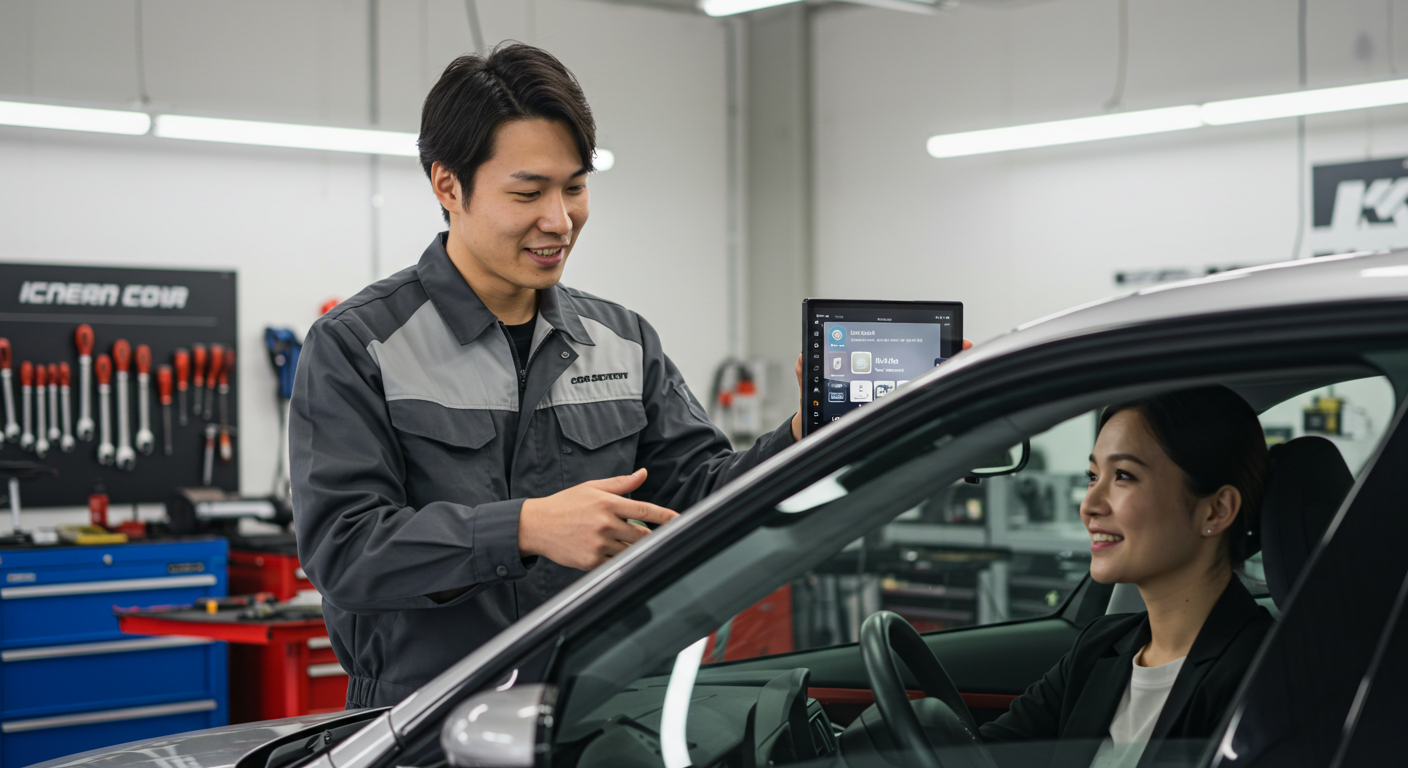Introduction to Southeast Asian Culinary Experiences
Southeast Asia is celebrated for its vibrant and diverse culinary landscape, which is deeply intertwined with the region’s rich cultural heritage. Countries such as Thailand, Vietnam, Malaysia, and Indonesia boast a variety of flavors, techniques, and ingredients that reflect the unique histories and traditions of their people. Food is not merely a means of sustenance in these cultures; it serves as a focal point for social gatherings, a form of artistic expression, and a meticulous craft passed down through generations. Each dish tells a story, often embodying the essence of local ingredients and culinary practices.
The significance of food in Southeast Asian culture is multifaceted, extending beyond mere taste and nourishment. Meals are often viewed as opportunities for social bonding, with families and friends gathering to share traditional recipes and stories. Marketplaces vibrate with the sounds of vendors hawking fresh produce, aromatic spices, and street food delights, showcasing the region’s culinary richness. These aspects make exploring the culinary scene in Southeast Asia not only a gastronomic adventure but also a window into the local way of life.
One effective way for visitors to engage with Southeast Asian food traditions is through cooking classes with locals. These immersive experiences enable participants to learn from skilled chefs and home cooks who possess invaluable knowledge about their native cuisines. By joining a cooking class, individuals can forge deeper connections with the community and gain insight into the practices and values that underpin local culinary heritage. Such an endeavor not only enhances one’s cooking repertoire but also fosters appreciation for Southeast Asian culture, making it a truly enriching journey for travelers and food enthusiasts alike.
Benefits of Taking Cooking Classes with Locals
Participating in cooking classes led by local chefs in Southeast Asia offers a range of significant benefits that enrich the culinary experience. One of the primary advantages is the authenticity in learning traditional recipes directly from those who have mastered them over generations. Local chefs are often the custodians of their cultural culinary heritage, providing participants with an intimate understanding of the regional context, ingredients, and history surrounding each dish. This direct link to tradition allows learners to appreciate the nuances of preparation that may be overlooked in standard cooking classes.
Another remarkable benefit is the opportunity to use fresh and local ingredients. Many cooking classes are conducted in local markets where participants can select fresh produce, spices, and other essentials that are integral to the recipes being taught. This practice not only highlights the importance of ingredient quality but also connects participants to the local food ecosystem. Engaging with local vendors and understanding the significance of seasonal produce adds an immersive touch to the cooking experience, fostering a deeper appreciation for the cuisine.
Additionally, cooking classes with locals provide valuable insights into unique cooking techniques that have been passed down through generations. These methods may include traditional cooking styles, preparation techniques, and even the cultural rituals associated with food in the region. Learning these skills from a local perspective offers a richer, more comprehensive cooking education, enhancing one’s culinary repertoire. The experiential nature of these classes encourages participants to engage their senses and explore flavors in a way that is often not possible through video tutorials or recipe books.
In summary, taking cooking classes with locals in Southeast Asia not only promotes cultural exchange but also allows individuals to gain firsthand knowledge of authentic recipes, fresh ingredients, and time-honored cooking techniques. These benefits create a transformative learning environment that leaves a lasting impact on every participant.
Popular Southeast Asian Destinations for Cooking Classes
Southeast Asia is renowned for its rich culinary heritage, making it an ideal region for unique cooking classes that offer immersive experiences into local cuisines. Among the standout destinations, Thailand is a frontrunner; its vibrant food scene is characterized by a harmonious blend of flavors, aromas, and colors. Cooking classes in Thailand often take place in beautiful settings, such as traditional homes and local markets. Participants can learn to prepare classic dishes like Pad Thai and Tom Yum and gain insights into the use of fresh ingredients sourced directly from local markets.
Vietnam stands out as another top destination, famous for its balance of fresh herbs and spices. Vietnamese cooking classes typically emphasize the importance of freshness and balance in flavors, with signature dishes such as Pho and Banh Mi being popular choices for attendees. The classes often include visits to local markets where students can learn about the ingredients that make Vietnamese cuisine so distinctive, providing a comprehensive view of the cooking process from start to finish.
Indonesia offers a plethora of culinary experiences that reflect its diverse ethnic groups. Cooking classes here often delve into the preparation of traditional dishes such as Nasi Goreng and Satay, with many classes held in picturesque settings that showcase the country’s stunning landscapes. Students can explore the use of spices and techniques that are unique to Indonesian cuisine, enhancing their cooking skills in an engaging environment.
Finally, Malaysia is a melting pot of cultures, and this diversity is reflected in its food. Cooking classes in Malaysia typically focus on popular dishes like Laksa and Roti Canai, providing participants with a deep understanding of the multicultural influences that shape Malaysian cuisine. Classes often include hands-on experience with local chefs, enriching the learning process and making it a memorable culinary adventure.
Types of Cooking Classes Available
Southeast Asia boasts a rich culinary heritage, making it an appealing destination for those interested in cooking classes. These classes come in various formats, catering to different interests and skill levels, allowing participants to immerse themselves in local flavors while enhancing their culinary skills.
One popular option is street food tours, where participants are guided through bustling marketplaces and local food stalls. During these tours, individuals learn about the vibrant street food culture, discovering how to prepare iconic dishes such as pad thai in Thailand or banh mi in Vietnam. These experiences often include sampling dishes from renowned vendors, offering insights into the history and preparation techniques behind these beloved street foods.
Another engaging format is market visit cooking classes, which typically start with a guided trip to a local market. Participants can explore the wide array of fresh ingredients and spices available, learning to identify key elements for authentic Southeast Asian cooking. After selecting ingredients, the class proceeds to a cooking session, where participants create traditional dishes using their market finds. This hands-on approach fosters a deeper understanding of local cuisine and promotes sustainable practices by sourcing fresh produce.
Traditional family cooking classes provide a heartfelt experience, as they often take place in the homes of local chefs. Participants get an opportunity to engage with families and learn recipes that have been passed down through generations. This format emphasizes the cultural significance of food and offers participants a unique glimpse into daily life in Southeast Asia.
Additionally, specialized workshops cater to specific interests such as vegetarian cooking or dessert making. These classes allow individuals to delve into niche areas, learning techniques and recipes that meet their dietary preferences or sweet tooth. Whether exploring vibrant flavors or mastering intricate desserts, participants can tailor their culinary journey to suit their tastes.
Cultural Elements Integrated into Cooking Classes
Cooking classes in Southeast Asia provide a unique opportunity to immerse oneself in the rich tapestry of local culture while learning culinary skills. These classes often serve as a bridge, connecting participants to the customs and traditions that shape the food of the region. In many instances, the incorporation of cultural elements such as local customs, folklore, and traditional dining practices is not merely an adjunct to the cooking experience; it is an integral component that enriches the learning process.
For instance, a cooking class may begin with an explanation of the significance of certain ingredients in local folklore. Many dishes are steeped in stories passed down through generations, which not only add depth to the recipes but also serve to preserve cultural heritage. Participants might learn about the symbolic meaning of particular herbs and spices used in their dishes, allowing them to appreciate the profound connections between food and identity.
Furthermore, traditional dining practices are often shared during these classes. This might include understanding the proper etiquette when consuming local dishes or the significance of communal eating, a custom prevalent in many Southeast Asian cultures. By participating in these practices, individuals gain insight into social norms and values, enhancing their overall experience.
Moreover, class instructors often incorporate personal anecdotes from their own lives, sharing how specific dishes are celebrated during festivals or family gatherings. This storytelling aspect not only captivates learners but also creates a sense of community and connection to the local way of life. Ultimately, cooking classes that combine culinary arts with cultural education ensure that participants leave with an enriched understanding of the food they prepare, transcending the mere act of cooking to celebrate a culinary heritage.
Tips for Choosing the Right Cooking Class
Choosing the right cooking class in Southeast Asia requires careful consideration of various factors to ensure a rewarding experience. One key aspect to evaluate is class size. Smaller classes often allow for more personalized attention from the instructor, facilitating a better learning environment. Moreover, in intimate settings, participants can engage more actively, ask questions, and receive immediate feedback. Larger classes may be less interactive but can offer a diverse atmosphere, allowing participants to meet fellow cooking enthusiasts.
Instructor qualifications should also play a pivotal role in your decision-making process. Look for instructors with relevant culinary backgrounds, such as formal training or significant experience working in the local cuisine. It can be advantageous if the instructor is also a local, as they can provide unique insights and cultural context, deepening your understanding of the dishes being prepared.
Location is another important factor to consider. Opt for cooking classes that are easily accessible and located in a culturally-rich area. Proximity to local markets or traditional kitchens might enhance the experience, offering opportunities to explore regional ingredients. Furthermore, check the cooking school’s environment; a clean and well-organized space usually reflects the quality of the program.
Lastly, reviews from previous participants offer valuable insights into the cooking class experience. Look for feedback on the instructor’s teaching style, class structure, and overall satisfaction. Online platforms and social media can be beneficial for gathering genuine testimonials. Remember to examine multiple sources to get a well-rounded view of what to expect. By carefully weighing these factors, you can choose a cooking class that aligns with your interests and skill level, ensuring an enriching culinary adventure.
What to Expect During a Cooking Class
Participating in a unique cooking class in Southeast Asia can be an enriching experience, immersing you in local flavors and culinary traditions. Typically, a cooking class begins with a warm welcome and introductions, allowing participants to connect with their instructor and fellow food enthusiasts. This initial interaction establishes a friendly atmosphere, fostering a sense of community that is essential throughout the class.
After introductions, the focus shifts to ingredient selection. Participants are often taken to a local market, where they can see, smell, and touch the fresh produce used in traditional dishes. Guided by the instructor, you will learn about various herbs, spices, and vegetables unique to the region, enhancing your understanding of the essential flavors that characterize Southeast Asian cuisine. This part of the experience also emphasizes the importance of sourcing local ingredients, providing insight into culinary sustainability and regional cooking practices.
Once the ingredients have been selected, the cooking process begins. Participants are usually involved in each aspect of meal preparation, from chopping vegetables to stirring sauces. The instructor will guide you through various cooking techniques that may include stir-frying, steaming, and grilling, which are fundamental in Southeast Asian cooking. Throughout this process, you will receive tips on flavor balancing and presentation, equipping you with skills you can take home.
The cooking class typically concludes with a communal dining experience, where participants can savor the dishes prepared together. Sharing a meal reinforces the connections made during the class and allows everyone to appreciate the fruits of their labor. This shared dining moment not only provides an opportunity to celebrate culinary achievements but also encourages conversations about the dishes’ cultural significance, making the experience memorable and educational.
Unique Recipes to Try at Home
Exploring the diverse culinary landscape of Southeast Asia is an enriching experience, and many unique recipes can be easily recreated at home. One such dish is Pad Thai, a beloved stir-fried noodle dish originating from Thailand. This recipe typically combines rice noodles, shrimp or chicken, scrambled eggs, and an assortment of vegetables, all tossed together with a tangy tamarind sauce. To add flavor, fresh lime juice and crushed peanuts are often sprinkled on top, making it a delightful meal that’s both savory and slightly sweet.
Another remarkable recipe to consider is Cha Gio, or Vietnamese spring rolls. This dish comprises a crispy outer layer made of rice paper, filled with a delicious mixture that usually includes ground pork, shrimp, mushrooms, and vermicelli noodles. These rolls are deep-fried until golden brown and are typically served with fresh herbs and a nuoc cham dipping sauce, offering a tantalizing burst of flavors.
For those who enjoy a heartwarming soup, Tom Yum should certainly be on the list. This Thai soup is known for its bold and aromatic flavors, featuring a combination of shrimp, lemongrass, kaffir lime leaves, and galangal. The unique balance of spicy, sour, and savory notes makes it a comforting yet invigorating dish that can easily brighten up any meal.
Lastly, Nasi Lemak is a traditional Malaysian dish that serves as a perfect introduction to the region’s unique flavors. Often enjoyed as breakfast, Nasi Lemak consists of fragrant coconut milk rice served with sambal (spicy chili paste), anchovies, peanuts, boiled eggs, and cucumber slices. Each component adds a layer of flavor, making this dish both satisfying and memorable.
These recipes are just a glimpse into the vibrant culinary offerings of Southeast Asia. By attempting these dishes at home, you not only connect with a rich heritage but also enhance your cooking skills, bringing a taste of Southeast Asia right to your kitchen.
Conclusion – Embrace the Culinary Journey
In the landscape of travel experiences, engaging in unique cooking classes with locals in Southeast Asia presents an exceptional opportunity to deepen one’s understanding of diverse cultures. These classes are much more than mere culinary lessons; they serve as a gateway to building meaningful connections with the local community. By participating in such experiences, travelers gain insights into traditional cooking techniques, local ingredients, and time-honored family recipes that are often passed down through generations.
Moreover, the process of preparing and sharing meals alongside locals can foster an environment of warmth and kinship. It allows participants to immerse themselves in the social fabric of the region while enjoying the richer aspects of travel that go beyond sightseeing. Whether it is learning to craft the perfect Pad Thai in Thailand or mastering the art of making fragrant curries in Indonesia, each cooking class offers a unique perspective on the culinary heritage of that specific locale. The knowledge gained in these classes can be a lasting takeaway, helping travelers recreate these dishes at home and relive their experiences.
As you embark on your travels in Southeast Asia, consider prioritizing these invaluable culinary classes. Embrace the culinary journey as a means of connecting with locals, savoring authentic flavors, and enhancing your travel experience. Remember, the heart of a destination often lies in its cuisine and the stories behind it. By choosing to cook with locals, you not only cultivate memories and friendships but also enrich your appreciation of the culture that surrounds you. Therefore, let the aromas and tastes of Southeast Asia guide you as you explore and enjoy this vibrant region.






